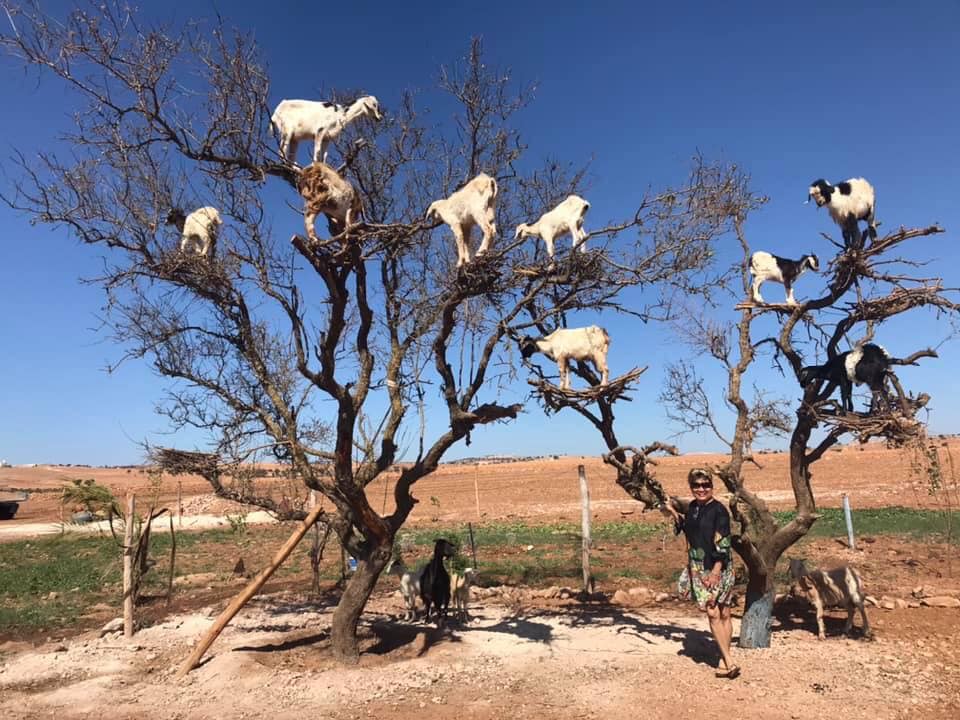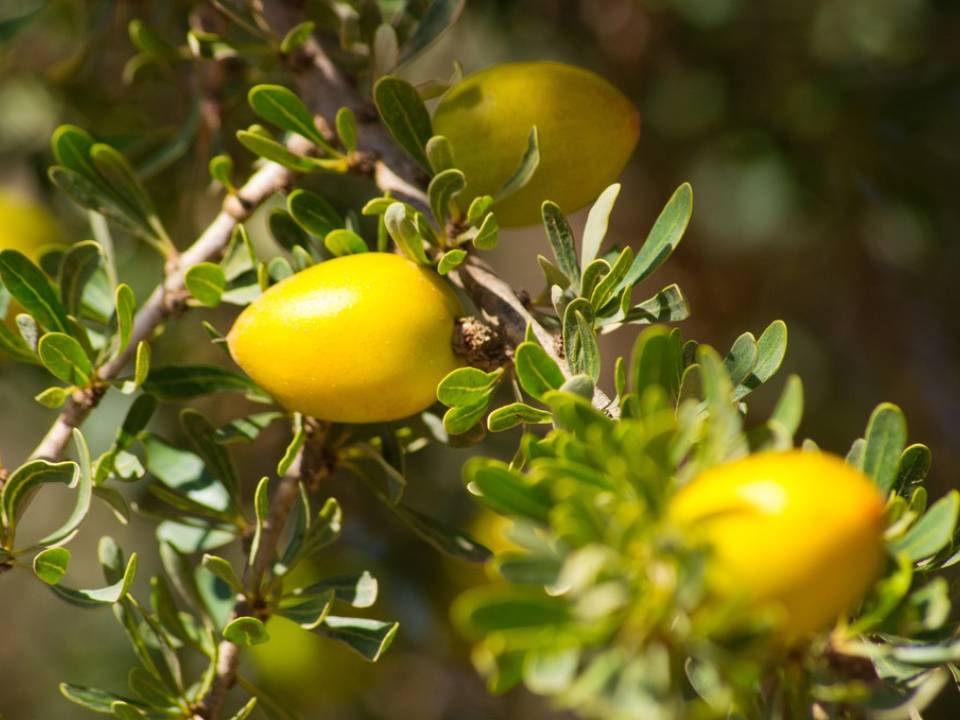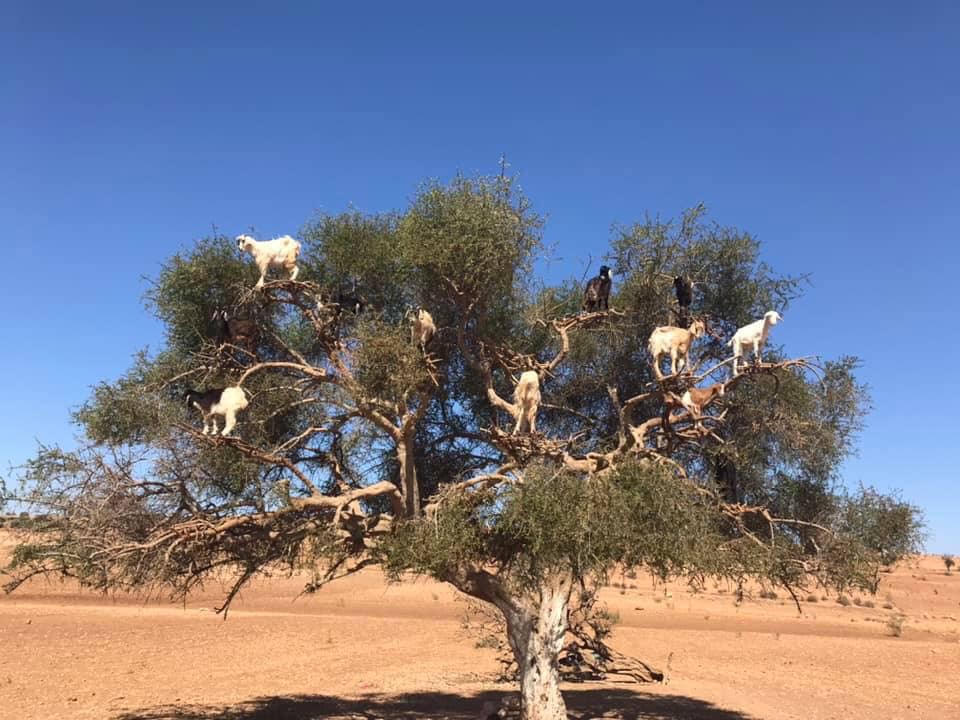Why do Moroccan goats climb trees?
Seeing the cloven-hoofed goats in Morocco climb trees is a bewildering sight. They only climb one particular type of tree: the Argania Spinosa typically referred to as the argan tree. The tree is endemic to southwest Morocco. A prickly and thorny tree, it produces small yellowish flowers, which then produce fairly small fruit. The fruit’s seed is within a nut, which is further surrounded by soft flesh and tough outer skin.
The fruit’s pulp is what attracts the goats to the argan trees. While the creatures will happily keep all hooves firmly on the ground and graze on low-hanging fruit, once they have gobbled the easy-to-reach produce, they will scramble up into the tree in search of more. The fruit is not consumed by humans.
In a country where food sources can be scarce for wildlife, Moroccan goats discovered a meal that they both enjoy and do not need to compete for. Kept away from the trees until the fruit is ripe (maturing takes more than a year), farmers actively encourage the goats to climb the trees for a good feed as soon as the fruit is ready. There are several reasons why. Traditional role in agriculture and the argan oil industry
The nut of the argan tree is used to produce the much-sought-after argan oil, an oil that is thought to have many beneficial properties and is used for both culinary and cosmetic purposes. So why would the farmers want the goats to eat the fruit?
The goats cannot digest nuts. Instead, they strip away the skin, devour the pulp, and swallow the nut whole. The nut then passes through the goats’ digestive systems, softening in the process, before being passed in the excrement. The nuts can then be gathered and ground to produce argan oil.
The impact of tourism
Because seeing goats in trees is such a novel sight, more and more farmers have purchased a larger number of goats to create a profitable attraction. This means that many of the goats’ visitors see in the trees, especially in areas close to major roads, have actually been lifted into the trees by the farmers. They are kept in the trees throughout the day and then taken down in the evening. Ropes are often used to haul the animals in and out of the trees, and the goats may sometimes be tethered in the trees. The goats may stand on branches, though it’s not uncommon to notice small planks of wood nailed to the branches to act as a more stable support for the photogenic goats.
Essaouira, Morocco (October 2019)





